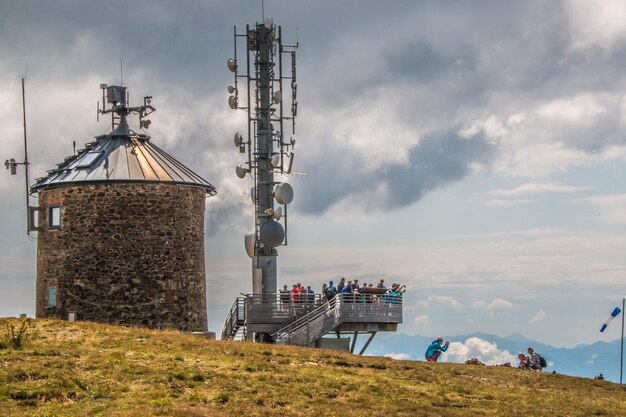In times when everything is digital - from banking to social media - it's hard to believe how often we talk about terms like Austria's digital sovereignty stumble. But what is actually behind it all? And why do experts like to talk so much about infrastructure when it comes to control over our data and technologies? I took a closer look and explained with a twinkle in my eye why Austria still has room for improvement when it comes to digital self-determination.
What does digital sovereignty actually mean - and why is it so important?
Imagine you have a cool smartphone, but the manufacturer controls everything you do. You're just a passive player in the big digital game. That would be okay if we knew who was in charge. But the truth is: digital sovereignty means retaining control over your own digital world. Without a stable infrastructure - i.e. fibre optic networks, cloud services and secure networks - this is virtually impossible. Austria's politicians and experts agree: without an independent, functioning Infrastructure digital self-determination is just a beautiful dream.
Many people tend to think of sovereignty in terms of borders and sovereign states, but in the digital world it means control over data, infrastructure and technical resources. This also involves issues such as data security, data protection and the ability to make independent technology decisions. Unfortunately, it doesn't seem quite so clear in this country how important it is to have your own infrastructure in order to be truly digitally sovereign. And this is precisely what the Austrian telecoms regulator, among others, is talking about.
A look at the current situation in Austria
The Austrian regulator Steinmaurer - yes, a real expert - said in an exclusive interview that the Infrastructure the basis for the Austria's digital sovereignty is. Sounds logical at first, doesn't it? Without solid networks, secure data centres and dedicated cloud strategies, it will be difficult to maintain control. But according to Steinmaurer, there is currently a lack of a clear national strategy that connects all parts of the digital infrastructure.
Imagine you have a bowl full of puzzle pieces, but no picture of how the pieces fit together. This is exactly how Austria currently feels when it comes to digital infrastructure. You have individual pieces - fibre optic cables here, data centres there - but a comprehensive, national strategy? Not a thing. And that's a problem, because a clear plan is the only way to ensure that we keep our data and technologies under control.
Why infrastructure is the key to digital control
Here's the good news: infrastructure is not just a technical term. It is also the foundation of our digital freedom. Without stable networks, we cannot set up cloud services in Austria, operate secure data processing systems and certainly cannot make sovereign decisions about which technologies we use. It is comparable to a motorway: without well-developed roads, we cannot reach our destination at all - including autonomous self-determination in the digital world.
Current challenges include providing enough fast broadband connections, establishing independent data centres and maintaining high data security standards. All of this requires a clear development policy and national investment. This is the only way Austria will one day be able to act more independently and confidently in the digital world - in other words, to strengthen Austria's digital sovereignty.
Looking ahead: What does it take to be truly confident?
This is where it gets exciting. To find the Austria's digital sovereignty To secure the future of the industry, a long-term strategy is needed above all. This means investing in infrastructure, training and innovation. It is not enough to just lay individual fibre optic cables - we need an overall digital concept that connects all federal states and gives small and medium-sized enterprises a stable basis to keep up in the digital age.
And, of course, we must not lose sight of data protection. A sovereign strategy ensures that our data is in safe hands, that our critical infrastructure is not influenced by foreign powers and that we can stand on our own two feet in terms of technology. Perhaps we even need a kind of digital emergency fund that can quickly step in in the event of a cyber attack. After all, we don't want the whole house to collapse just because the infrastructure isn't stable enough.
How does it work in other countries?
Let's take a quick look at Estonia, which is often cited as a model example of digital sovereignty. The small Baltic country was an early adopter of its own secure infrastructure. The result: digital progress that also makes life easier for citizens and makes the state more independent. Austria could learn a thing or two from this. Instead of just sitting back and watching, the country should invest more in a well thought-out infrastructure so that it does not lose out in the digital competition.
Final thoughts: It's high time to roll up our sleeves
The message is clear: Austria's digital sovereignty is not a sure-fire success. It takes courage, clever minds and, above all, an eye for the big picture. Infrastructure is our best friend - without it, everything is just a castle in the air. If we want to take advantage of the opportunities offered by digitalisation, we need to invest now, plan strategically and actively shape our digital self-determination. Otherwise, the next chapter in Austria's digital history could be quite frustrating - or even worse: completely controlled from the outside.
Conclusion: For a sovereign digital future in Austria
What remains? Just one thing: Austria needs a clear, sustainable strategy for its digital infrastructure. Because without stable networks, secure data centres and independent services, the Austria's digital sovereignty just a pious hope. It is up to us to set the right course now so that we not only play a part in the digital world, but also really determine where the journey takes us.
